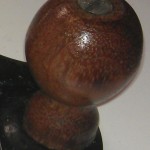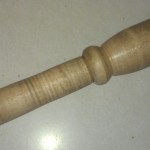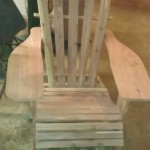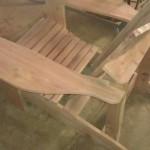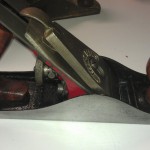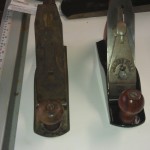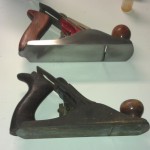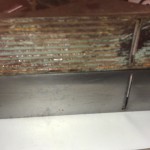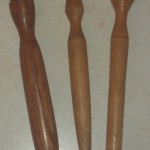 I am getting ready to take a class at my local Woodcraft to learn to how to make hand cut dovetails. Most of the tool requirements listed I already owned. One of the exceptions was a marking knife. I decided to give it a try at making one. I bought a couple pen blanks of Brazilian Cherry as I really liked how the finish came out on the hand plane tote and knob. Alas the first attempt at the first knife ended in disaster. When I went to drill the hole for the blade tang, the piece split all the way down. Bummer! So I started over, and once I got the handle turned, I drilled progressively larger until I got to the size hole needed. After epoxying in the blade and playing around with it, I realized the blade was too short and way too wide to be practical for marking dovetail cut lines. I decided to try again, but this time used some scrap cherry left over from the chisel rack. This is a much narrower handle, for a much narrower and longer blade. This should be much better suited for cutting dovetails. The last one was made as I had made an experimental blade before doing anything for real. Even the it is beveled for a lefty and I am right handed (oops) I decided to make one more handle for this one.
I am getting ready to take a class at my local Woodcraft to learn to how to make hand cut dovetails. Most of the tool requirements listed I already owned. One of the exceptions was a marking knife. I decided to give it a try at making one. I bought a couple pen blanks of Brazilian Cherry as I really liked how the finish came out on the hand plane tote and knob. Alas the first attempt at the first knife ended in disaster. When I went to drill the hole for the blade tang, the piece split all the way down. Bummer! So I started over, and once I got the handle turned, I drilled progressively larger until I got to the size hole needed. After epoxying in the blade and playing around with it, I realized the blade was too short and way too wide to be practical for marking dovetail cut lines. I decided to try again, but this time used some scrap cherry left over from the chisel rack. This is a much narrower handle, for a much narrower and longer blade. This should be much better suited for cutting dovetails. The last one was made as I had made an experimental blade before doing anything for real. Even the it is beveled for a lefty and I am right handed (oops) I decided to make one more handle for this one.
Also, I made the blades from a demolition reciprocating saw blade, which is about 1/16″ thick piece of metal. I used my Dremel to cut the metal, and grind and belt sander to do the shaping and beveling. I then sharpened them like I would any other blade.

